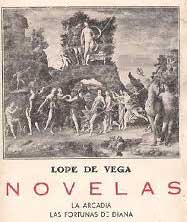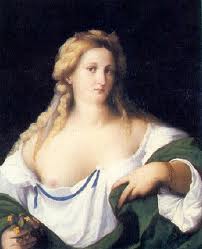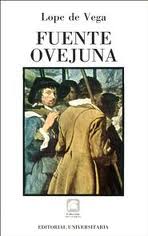The works of Lope de Vega
Lope de Vega, one of the most prolific Spanish authors, had a long and complete life, most of it spent in Madrid. He wrote approximately 3000 sonnets, 3 novels, 4 novellas, 9 epics, 3 didactic poems, and several hundred comedies. Lope is only second to Cervantes regarding his importance during the Golden Age of Spanish literature, and he's most famous for modernizing the theatre of the 17th century and ridding it from the strict Aristotelian structure. This new theatre genre was called "new comedy" or "Spanish comedy".
The Works of Lope de Vega

The first novel Lope wrote is called "La Arcadia" (1598), and it's a pastoral novel in which he included several poems. One of his other pastoral works, "Los Pastores de Belén" (1612), he writes about the same topics but with a theological streak, and he included some sacred poems. "La Filomena" and "La Circe" contain four short novels in the Italian style, and they were dedicated to Marta de Nevares, his last lover, with whom he lived in Madrid until she died. In "La Dorotea" he writes, in the style of "La Celestina", his frustrating amorous adventures with Elena Osorio, his first love.
In his poems, Lope used all the resources available at the time. He was very attracted to the popular movement, the poems for the masses, but he also appreciated and often cultivated the more refined poetry of writers like Góngora, even though he thought that poems and other literary works should be written so that they could be understood, not to show off the extensive knowledge of the author. In this aspect, he was closer to the Conceptismo movement. Lope wrote mainly two types of poems:
- Long poems: narrated almost like a story, normally with an epic or mythological theme. Great examples are "La Dorotea" (1598), "La hermosura de Angélica" (1602) or "Jerusalén conquistada" (1609).
- Short poems: in these he used all types of metric and verses and investigated in different topics. Some examples are "Rimas" (1602) or "Rimas Sacras" (1625) in which he writes about his theological ideas.
Lope de Vega, play writer

Although no one can doubt the quality of Lope's works, his real genius comes out in his plays. Lope revolutionized the theatre genre during the 17th century, and introduced a new kind of play which was not restricted by the Aristotelian structure of time, place and action. After writing plays for many years, Lope was asked to write "Arte nuevo de hacer comedias en este tiempo" (1609) a manual on how to write the type of plays he did. Out of the three units in theatre (action, time and place), he recommends respecting only the action unit to make the play easy to follow and understand. He also defends the mixture of comedy and tragedy (before, plays were either comedies or tragedies, but never both). The verses are predominantly octosyllables, then pentameters. It is, therefore, a multimeter theatre far from the academic restraints, unlike the French classical theater, and in that sense more like the Elizabethan theatre. His plays mostly revolve about the topics of love, honor and faith.
There are many different authors who have classified Lope's works in different ways, but one of the simpler ones divided the plays roughly in comedies and dramas:
- Comedies:
- Comedies of "capa y espada": the characters are knights and nobles and they fight for a woman's love. La dama boba, El rufián Castrucho, Los locos de Valencia, La viuda valenciana, La discreta enamorada, El acero de Madrid, Las bizarrías de Belisa
- Comedias Palatinas (Palace comedies): the characters are people from court, and topics revolve around love and honor They normally take place in far lands (Italy, Hungary or Poland) and in the past, and have historical details. Servir a señor discreto, El perro del hortelano, El villano en su rincón.
- Comedias Pastorales (Pastoral comedies): the author usually appears in these plays under the name "Belardo", and the characters are normally humble people like shepherds. The topics revolve mostly around love and jealousy.El verdadero amante, La pastoral de Jacinto, Belardo furioso, La Arcadia.
- Dramas: These works include both comedies and tragedies, although the two genres are normally mixed. Dramas commonly have a sad or tragic ending, although this is not always respected.
- Strictly historic: El esclavo de Roma, El nuevo mundo descubierto por Colón, Don Juan de Austria en Flandes
- Inspired by the Romancero: Las mocedades de Bernardo, El bastardo Mudarra y Siete infantes de Lara, Las paces de los reyes y judía de Toledo o del ciclo carolingio como La mocedad de Roldán, El marqués de Mantua y Ursón y Valentín.
- Inspired by chronicles: El rey don Pedro en Madrid or El infanzón de Illescas
- Inspired by independent literary sources: El remedio en la desdicha, a Moorish comedy that tells the story of Abindarráez and the beautiful Jarifa.
- Tragedies: also called "honor dramas". Fuenteovejuna, Peribáñez y el comendador de Ocaña, El castigo sin venganza and El caballero de Olmedo
- Mythological comedies: these explore the mythological world, with supernatural and imaginary characters. Las mujeres sin hombres, El vellocino de oro, El marido más firme.
- Biblical: La creación del mundo y primera culpa del hombre, which tells the story of Cain and Abel. Others are Los trabajos de Jacob, La historia de Tobías, La hermosa Ester
- About Saints: the trilogy dedicated to Madrid's saint: Saint Isidro. San Isidro labrador de Madrid, La niñez de San Isidro y La juventud de San Isidro
- Autos: similar to the morality plays of the English theatre. La maya or La siega.

Lope's works have survived through the centuries and are still very well considered in the literary circles. His plays are still represented in theatres around the world and all his works are studied in schools.

